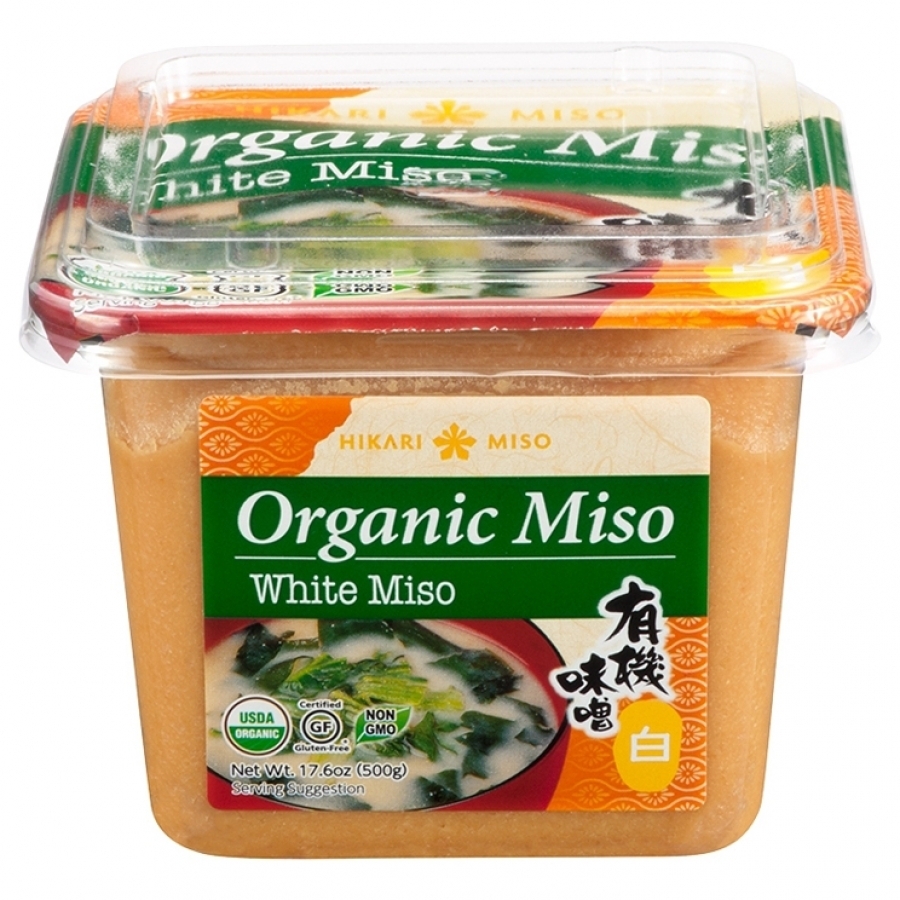

I wouldn’t use a dark miso for porridge as it would become too dominant. I always whisk in a little shiro miso when I make mine. I also use miso when I make porridge - in the same way the Scots add a pinch of salt. It shouldn’t need any seasoning but, if it does, use soy sauce or more miso instead of salt. Then add either a cup of cream, or stock, bring to a simmer, and reduce by half. Mix a tablespoon of miso paste into a slurry with ¼ cup stock or water and add to the mushrooms. Use a variety for differing textures - shiitake, portobello, oyster, button. To make the sauce, fry sliced red onions in butter or olive oil until beginning to caramelise, then mix in a few handfuls of sliced or diced mushrooms and sweat them off.

The paler shiro miso would work equally as well, in fact any miso at all will be beneficial. Moromi miso would also be great - it's a very lumpy version and is often served mixed with diced cucumber as a little side dish or pickle, as the Japanese tend to do.
#TYPES OF MISO PASTE FULL#
However, to offer some guidance, hatcho miso is good and grunty, packed full of barley and with a dense, almost roast meat flavour, which will complement the beef. I guess it’s one fungus working with another. You could make that same soup with a darker miso, something like the barley-based hatcho miso, but the flavour would be too dense, too strong.įor the beef sauce, I’d use any miso you have at hand as all will make the mushrooms taste better. Its sweetness is spot-on for a soup such as this. The miso they'll likely have used will be shiro (white) which isn't so strongly flavoured that it overpowers the other ingredients. This is the tofu that has settled to the bottom. It usually comes with cubes of tofu and little squares of wakame or thin kombu seaweed in it, and when you give it a stir this whitish sediment rises in the soup. If you’ve ever been to a Japanese restaurant you’ll likely have had a bowl of miso soup, a broth really. But that’s just relative, because all of them are savoury. The paler the miso the less savoury it will be.

Boiled soybeans and rice have a plain character, but add some koji, treat it to the right temperature and humidity and give it time and soon enough you’ll have a delicious savoury seasoning.Īs to which one to use - it’s really up to what effect you’d like in your finished dish. The fermentation process is what makes miso such a fabulous ingredient. It may be just one of these or it could be several. The ingredients used will determine the final miso, but generally it’s soy beans along with rice, wheat and barley. Koji is also used in the production of sake, for a similar reason. Miso is made by fermenting various grains and legumes with salt and koji - a fungus to help the fermentation process. It can be dark brown, lumpy and savoury tan-coloured, smooth and slightly sweet and there’s even a delicate pale creamy one which is salty and sweet that I’ve often enjoyed. Miso comes in a huge range of styles, forms and colours depending on what it’s made from. Parmesan cheese has it, soy has it (combined with its salty character), and the crunchy bits stuck to the bottom of the roasting pan have it in abundance. Umami translates from the Japanese as deliciousness, and I’d describe it as savoury. It’s a powerhouse of flavour - packed full of that Japanese identified sensory taste called umami (alongside sweet, sour, bitter and salty). Just wondering what type of miso is best for the sauce? I know they are all quite different. I saw your recipe for miso mushroom sauce for beef in bite magazine. Share this article facebook copy link twitter linkedin reddit email


 0 kommentar(er)
0 kommentar(er)
